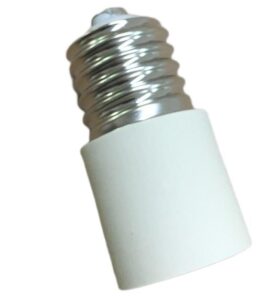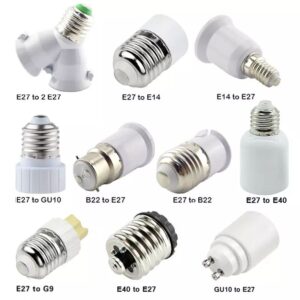The world of lighting is vast and varied, often leading to questions about the subtle differences in components. One common query I frequently come across is the distinction between phenolic and porcelain lamp sockets.

While both phenolic and porcelain sockets serve as bases for bulbs, they differ in terms of material, durability, heat resistance, and aesthetic appeal. For lighting aficionados or homeowners looking to make informed decisions, understanding these nuances is vital. Let’s delve into the intricate details of these two socket types.
What are the base materials?
At the heart of any socket is its base material, which fundamentally affects its properties. Phenolic sockets are made from a synthetic polymer, which, in simple terms, is a type of plastic. This material is known for being affordable and relatively durable. Porcelain lamp sockets, on the other hand, are crafted from a white ceramic material. The inherent properties of porcelain make it more durable and resistant to high temperatures.

How do they fare in heat resistance?
One of the most critical factors to consider in lighting components is how they handle heat. Phenolic lamp sockets, being plastic-based, have a lower heat tolerance. They can soften or deform under prolonged exposure to high temperatures.
This makes them suitable for LEDs and other low-wattage bulbs. In contrast, porcelain light sockets thrive in high-temperature scenarios. Their ceramic nature allows them to resist the intense heat produced by high-wattage bulbs, making them ideal for halogen bulbs or other heat-intensive light sources.
Is there a difference in durability?
Durability is a concern, especially when we talk about fixtures that will be in use for extended periods. Phenolic lamp sockets are decently durable but might deteriorate faster under intense conditions due to their plastic nature. Porcelain sockets win the durability contest hands down. Their ceramic build ensures longevity, making them a popular choice in areas where changing sockets frequently is impractical.

What about aesthetics?
Lighting isn’t just functional; it’s also a design statement. Phenolic sockets typically have a basic, utilitarian look given their plastic construction. However, they can be dressed up or down depending on the fixture.
Porcelain lamp holders exude an air of sophistication. Their glossy white appearance can add an elegant touch to fixtures, often being the choice for those who prioritize aesthetics alongside functionality.
How do they impact the environment?
In an era where sustainability matters, even the choice of sockets has environmental implications. Phenolic lamp sockets, being plastic-based, can have a more significant environmental footprint due to the challenges in recycling plastics.
Porcelain lamp sockets, on the other hand, have a lesser impact. They’re made from natural materials, making them more eco-friendly in terms of production and disposal.

What’s the cost difference?
For many, budget constraints play a pivotal role in decision-making. Phenolic sockets are generally more affordable due to the lower cost of production. They’re a go-to for those looking for cost-effective solutions. Porcelain sockets, while a bit pricier, offer value for money in terms of durability and heat resistance. They might be an investment upfront but can lead to savings in the long run.
What does James Lighting recommend?
At James Lighting, our commitment isn’t just to provide products but to enlighten customers about the best choices. We believe that both phenolic and porcelain light sockets have their unique advantages.
The choice ultimately boils down to specific needs. If heat resistance and durability are priorities, porcelain might be the better option. For budget-conscious projects, phenolic light sockets could be the answer.

Conclusion
Choosing between phenolic and porcelain sockets is not merely about picking a product. It’s about understanding the nuances, the pros and cons, and making a decision that suits individual needs. With the insights from James Lighting, arm yourself with knowledge and let your lighting choices shine bright.













